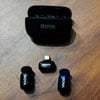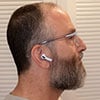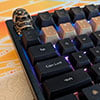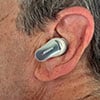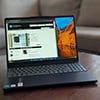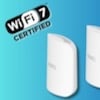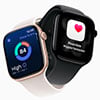If you think your iPhone is too fat, Apple has just unveiled the skinny iPhone Air, measuring a silly 5.64mm – less than a quarter inch – thin, but still boasting a 6.5-inch display.

Along with the Air, which starts at $999, Apple unveiled three other iPhone 17 models: the vanilla 6.3-inch basic unit starting at $799, the 6.3-inch Pro starting at $1,099, and the iPhone 17 Pro Max starting at $1,199, all at the same prices as last year’s iPhone 16 line.
iPhone Air
iPhone Air is obviously the star of these new iPhone 17 introductions. Physically, at 6.15 inches tall and 2.94 inches wide, it's slightly larger than the vanilla iPhone 17 and a smidge smaller than the iPhone Pro Max. At just 5.82 ounces, Air is lighter than the smaller 17 Pro (7.27 ounces) and the small, entry-level iPhone 17 (6.24 ounces).
Air is protected on both sides by Apple's second-generation Ceramic Shield 2. This new protective layer offers higher anti-reflectivity and three times the scratch resistance of the previous iPhone front-side-only Ceramic Shield.
Whether the skinny Air, made from recycled titanium, is tough enough to withstand the pressure of sitting down with it in your back pocket remains to be seen.
Functionally, the Air doesn’t skimp on tech and features nearly all the upgrades found in the iPhone 17 Pro models.
For instance, it’ll run on Apple’s newest A19 Pro series chip – the same chip that also powers the new 17 Pros, though with a 5-core GPU versus a 6-core GPU. While benefiting from increased processing speed, graphics performance, and power consumption, the main user advantage of the more powerful A19 Pro chip is faster artificial intelligence (AI) capabilities.
I’m hopeful that the new iOS 26 that will accompany the new iPhones will eliminate the unnecessary “Do you want me to use ChatGPT to answer that?” AI query middleman. (My answer is always “I don’t care, I just want the damn answer to my question!”)
iPhone Air, along with the other iPhone 17 editions, includes both Apple’s own designed N1 wireless chip to power WiFi 7, Bluetooth v6, and Threads, as well as improving personal hotspot and AirDrop capabilities, and Apple’s own second-gen C1x designed modem that uses 30% less energy than the original C1 modem.
For photography, Apple’s biggest upgrade in all four new iPhone 17 models is the new Center Stage front camera. The sensor is square, so you no longer need to turn the camera horizontally to capture widescreen video. Just hold the phone as you usually would vertically and choose within the camera app to shoot in landscape mode, or any other aspect ratio you choose.
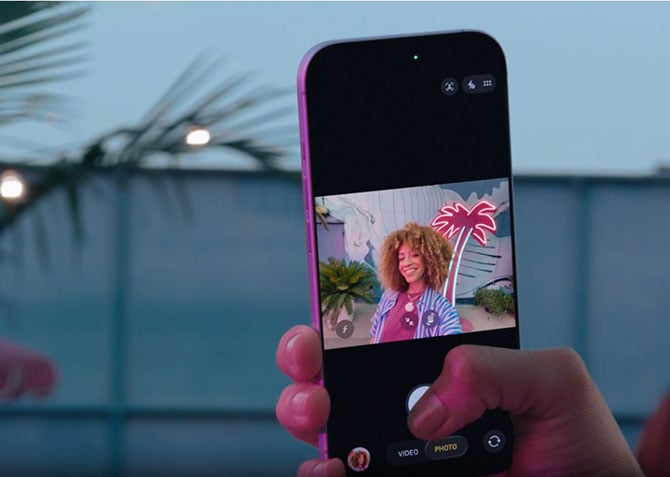
Of course, Apple has again improved its Fusion camera, now enabling 48MP resolution for telephoto shots along with the default 24MP resolution and offering both 1080p HD and 4K Dolby Vision up to 120 frames per second video capture. What the Air gives up is Macro photography, which is available on the regular 17 and 17 Pro models.
A larger sensor and faster aperture improve low-light performance, and you can choose from four lens sizes (i.e., 28 and 35mm). Apple also has improved optical image stabilization for both rear and front selfie cameras to keep photo subjects – including yourself – from jittering or shaking and automatically keeps you and/or your subject in focus.
Even better, all the 17 model cameras, including the Air, are now capable of dual-capture video – record both yourself from the selfie camera and what you’re looking at through the rear cameras in the same video.
Apple promises the all-purpose (and rarely accurate) “all day” battery life – up to 27 hours of video playback or 22 hours of streamed video. To extend the iPhone Air's battery life, Apple will also sell a matching “low profile” snap-on, thin MagSafe battery that enables a total of 40 hours of video playback. Fast charging provides a 50% charge in 30 minutes using a 30W or higher adapter, and up to 20W with MagSafe wireless charger.
Read more: Best Slim and Fast-Charging Portable Batteries
iPhone 17 and 17 Pro
As to the more standard iPhone 17 models, these are not mere step-up iPhones, but a complete redesign in their physical construction to make the new models tougher, provide a wider rear camera array with more lenses, higher resolution, and more telephoto capable cameras front and rear, better wireless connectivity thanks to perimeter antennas, more powerful for faster AI processing, and larger and longer-lasting “all-day” batteries.
First off, for the 17 Pro models, Apple has designed a more rigid, tougher, and durable unibody frame constructed of extruded solid aerospace-grade aluminum that offers a plethora of benefits. The 17, like the Air, has a titanium frame.
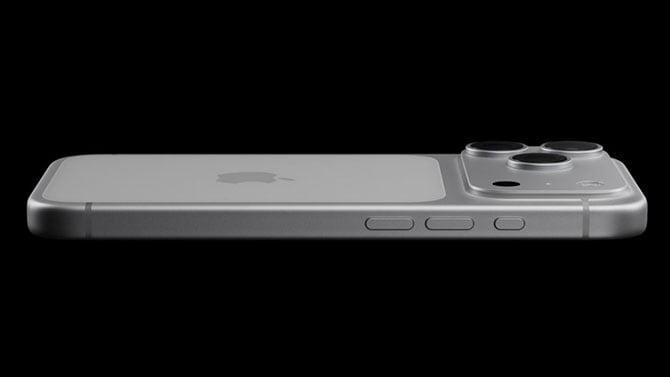
The most obvious and practical benefit from this unibody redesign is Apple’s largest and longest-lasting iPhone battery ever. You’ll get an additional 8-9 hours of video playback compared to the comparable iPhone 16 models: 33 hours of video playback for the 17 Pro and 39 hours for the 17 Pro Max. (The iPhone 17 has 30 hours of video playback.)
All iPhone 17 models support fast charging now. With wired charging, you’ll get 50% fast charging in 20 minutes using a 40-watt or higher charger for iPhone 17 and 17 Pro. With a wireless MagSafe charger, you can charge up to 25W with the iPhone 17 and 17 Pro.
A larger battery means a slightly heavier iPhone, however. The 17 Pro and 17 Pro Max weigh 7.27 ounces and 8.22 ounces, respectively, compared to 7.01 and 8 ounces for last year’s 16 Pro and 16 Pro Max.
The Pro models’ unibody frame, along with the Apple-designed N1 wireless networking chip, also enables a perimeter antenna to improve wireless reception. For improved anti-reflection for clearer bright sunlight viewing and better protection against scratches, Apple adds its Ceramic Shield 2 to both sides of the Pro models and the front of the iPhone 17.
The rear cameras on the 17 Pro are equipped with a new Pro Fusion camera system, with larger sensors, enabling 48MP resolution on all three rear Fusion lenses, now providing up to 8x optical zoom using the 200mm capability and improved low light performance. The iPhone 17 has a 48MP Fusion camera system, like the Air, and adds a 48MP Fusion Ultra Wide lens to the Main lens.
Read more: Forgot Your Apple ID Password? Here's What to Do
Pricing and availability
The iPhone 17 model is available with either 256GB or 512GB of storage, the Air and Pro add a 1TB option, and the 17 Pro Max adds a new 2TB memory choice. The A19 Pro chip powers all but the entry-level iPhone 17; it runs the plain A19 chip.
The entry-level iPhone 17 (starting at $799) will be available in five colors: Space Black (actually more of a charcoal gray), White, Mist Blue, Sage, and Lavender. The iPhone Air (starting at $999) is available in Sky Blue, Liquid Gold, Cloud White, and Space Black. The iPhone 17 Pro models come in just three colors: Silver, Deep Blue, and a strikingly bright Cosmic Orange.
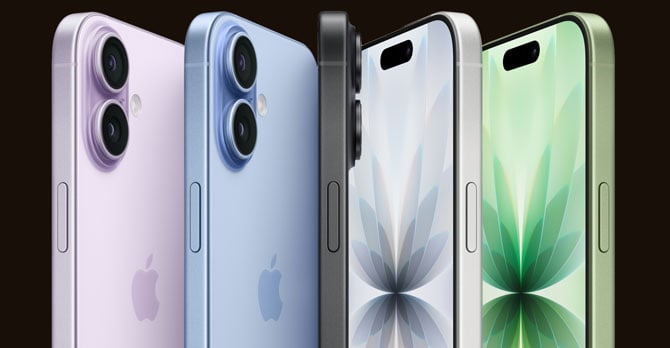
All four iPhone 17 models will go on pre-sale this Friday on Apple.com, and will be available September 19.
[Image credit:screenshots of Apple event via Techlicious, Apple]

